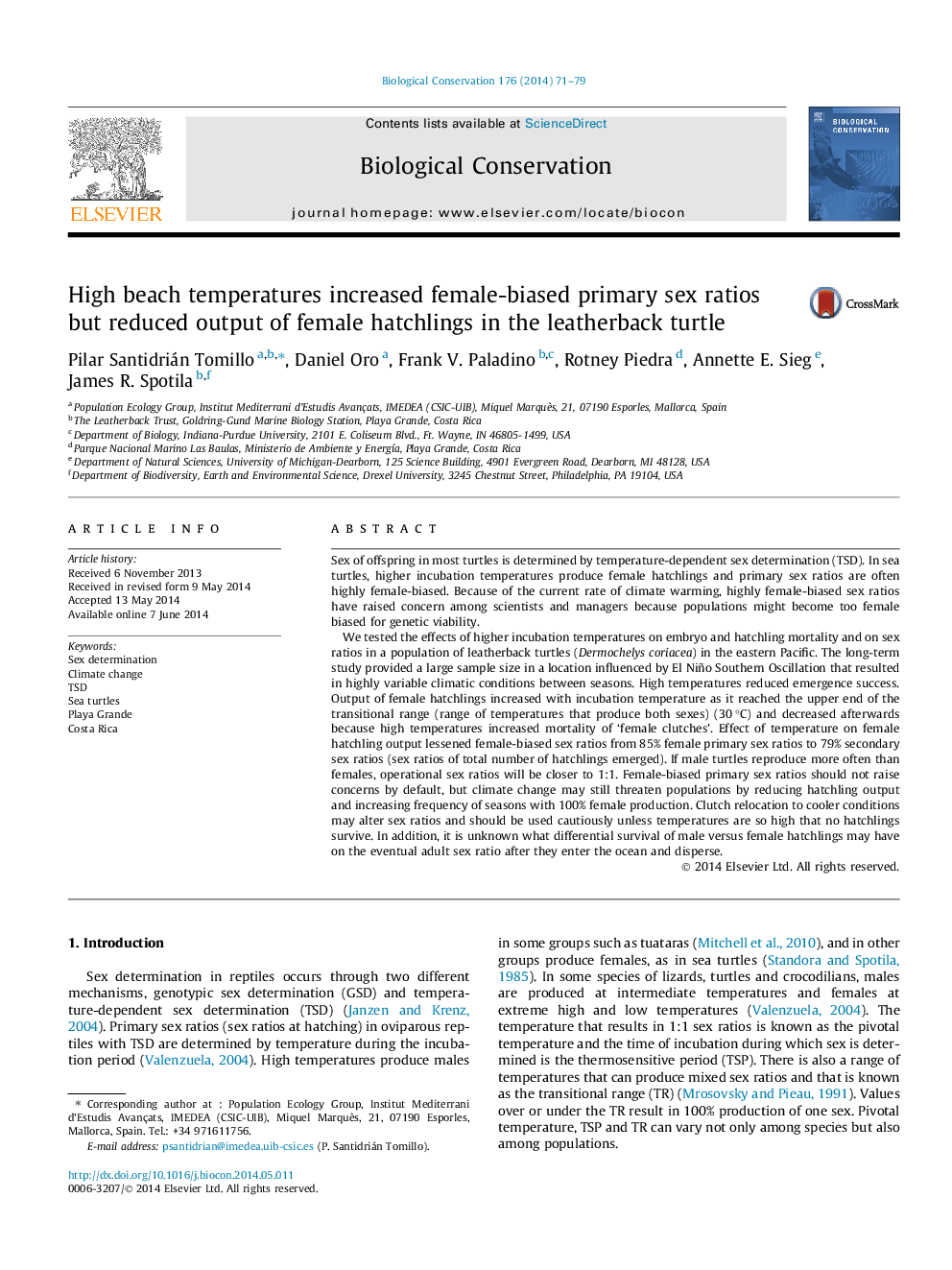| کد مقاله | کد نشریه | سال انتشار | مقاله انگلیسی | نسخه تمام متن |
|---|---|---|---|---|
| 6299458 | 1617925 | 2014 | 9 صفحه PDF | دانلود رایگان |
Sex of offspring in most turtles is determined by temperature-dependent sex determination (TSD). In sea turtles, higher incubation temperatures produce female hatchlings and primary sex ratios are often highly female-biased. Because of the current rate of climate warming, highly female-biased sex ratios have raised concern among scientists and managers because populations might become too female biased for genetic viability.We tested the effects of higher incubation temperatures on embryo and hatchling mortality and on sex ratios in a population of leatherback turtles (Dermochelys coriacea) in the eastern Pacific. The long-term study provided a large sample size in a location influenced by El Niño Southern Oscillation that resulted in highly variable climatic conditions between seasons. High temperatures reduced emergence success. Output of female hatchlings increased with incubation temperature as it reached the upper end of the transitional range (range of temperatures that produce both sexes) (30 °C) and decreased afterwards because high temperatures increased mortality of 'female clutches'. Effect of temperature on female hatchling output lessened female-biased sex ratios from 85% female primary sex ratios to 79% secondary sex ratios (sex ratios of total number of hatchlings emerged). If male turtles reproduce more often than females, operational sex ratios will be closer to 1:1. Female-biased primary sex ratios should not raise concerns by default, but climate change may still threaten populations by reducing hatchling output and increasing frequency of seasons with 100% female production. Clutch relocation to cooler conditions may alter sex ratios and should be used cautiously unless temperatures are so high that no hatchlings survive. In addition, it is unknown what differential survival of male versus female hatchlings may have on the eventual adult sex ratio after they enter the ocean and disperse.
Journal: Biological Conservation - Volume 176, August 2014, Pages 71-79
